Name William Clutz | ||
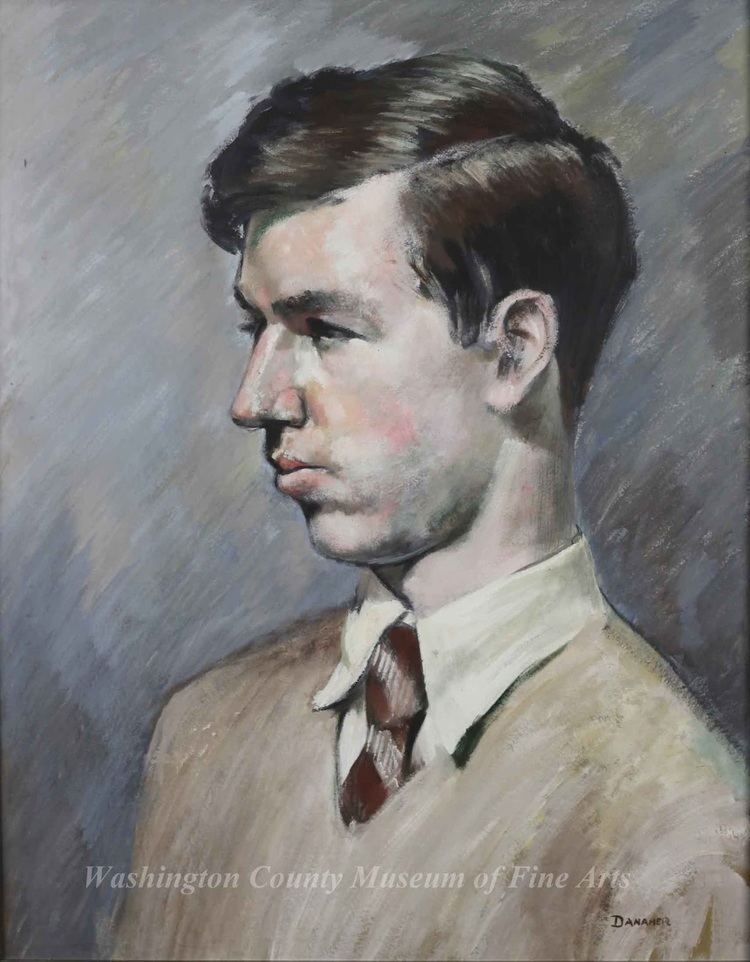 | ||
Full Name William Hartman Clutz Born 1933 Gettysburg, PA | ||
William Clutz: Crossings artist lecture (10/06/2016)
William Clutz (born 1933) is an American artist known for urban paintings, pastels, and charcoal drawings of pedestrian scenes transformed by light. He is associated with a revival in figurative representation in American art during the 1950s and 1960s.
Contents
- William Clutz Crossings artist lecture 10062016
- Early life
- Career
- Selected important works in major collections
- References
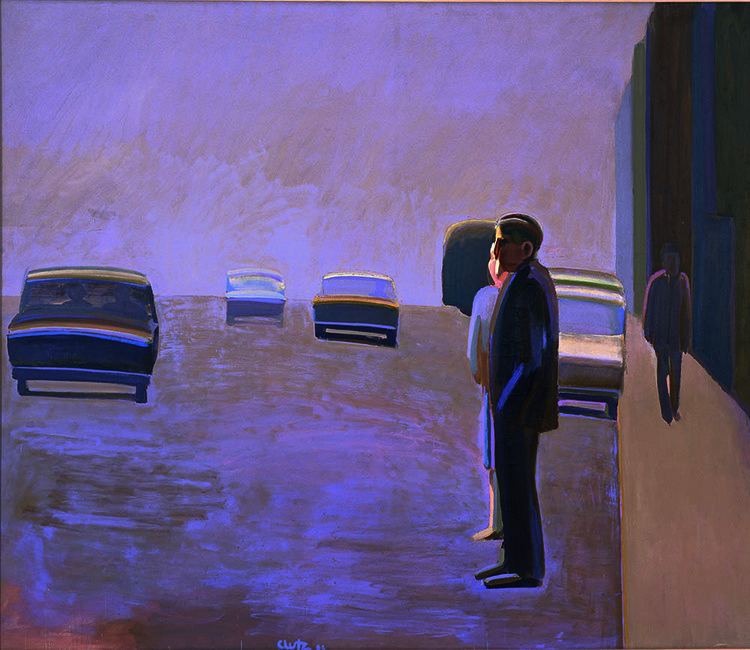
Clutz was born in Gettysburg, PA, and he grew up in Mercersburg, PA. He attended Mercersburg Academy and University of Iowa. He moved to New York City in 1955 to begin his career as a professional artist, and lived there until 1996 when he moved to Rhinebeck, NY, where he currently resides.
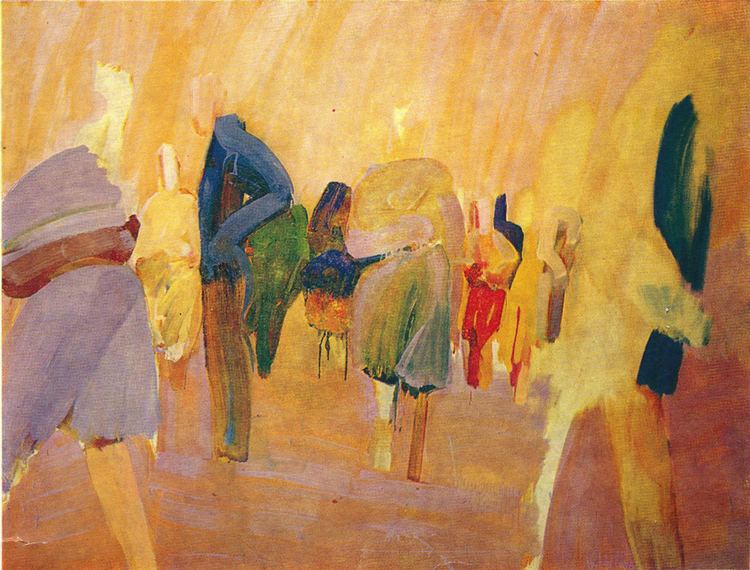
Early life
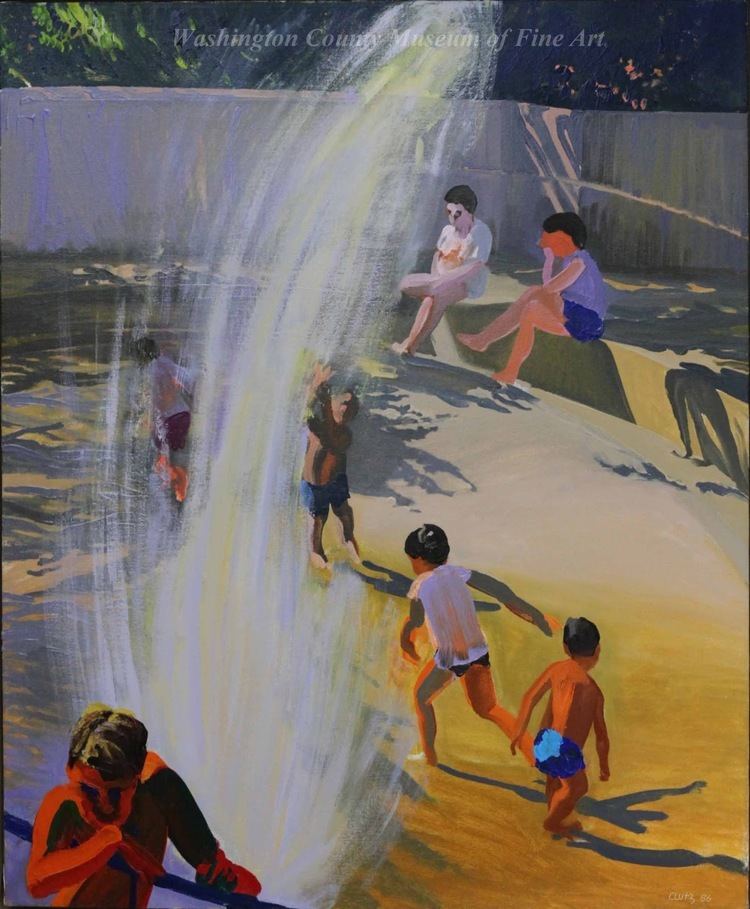
In 1933, Dr. and Mrs. Paul A. Clutz, moved from their parents’ homes in Gettysburg, PA to Mercersburg, PA, only a few months after the birth of their second son, William. Dr. Clutz was a recent graduate of the University of Pennsylvania Medical School. He enlisted in the navy in 1941, returning from the Pacific Theater in 1946. Mrs. Clutz received a B.A. in Art History from Barnard College, and was aware of the contemporary art world of the time.
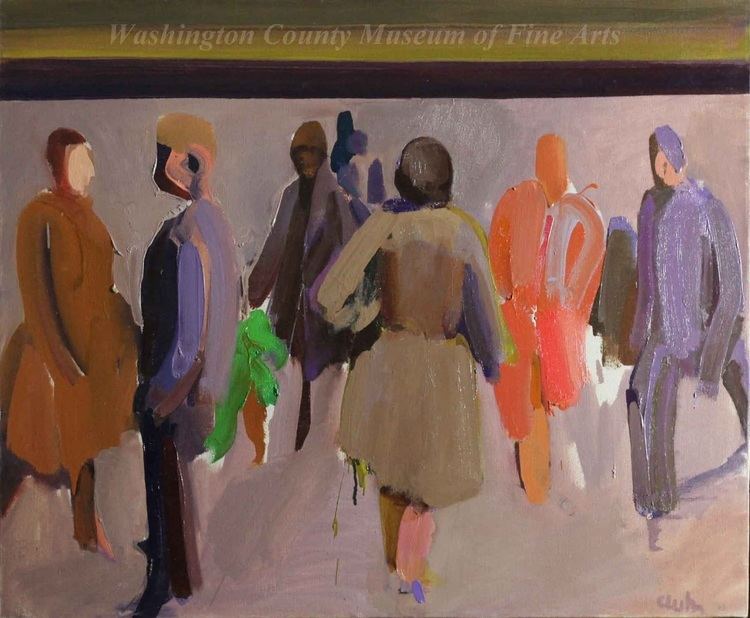
William Clutz indicated an early interest in the arts as a child. At age 11, it was suggested that he study art with a recent Mercersburg resident, Thomas Danaher. Danaher (1892-1978) and his wife, Ellen, had moved to Mercersburg in 1944, soon after Thomas had finished his tour of duty in the Navy. He was a New York City native, and had studied art at the Cooper Union and at the Art Students League. He had studied under Hans Hoffman and Rockwell Kent. Clutz continued to study with Danaher when the latter began teaching at the nearby Washington County Museum of Fine Arts. Clutz attended Mercersburg Academy from 1947-1951 and continued his studies with Danaher, as the academy offered no art courses at that time.

Clutz attended the University of Iowa from 1951-1955. During this time, he began exhibiting his own paintings in local shows, winning 1st prize at the annual Washington County Museum Regional Cumberland Valley Artists Exhibition in 1952, 1953, 1957 and an honorable mention at the 1954 Iowa Annual in DesMoines, IA.
Career
In 1955, Clutz moved to New York City, and began his career as a professional artist. Situated in an area of other struggling artists, he lived on East 9th St. between Avenues B and C near Tompkins Square Park, the subject of several of his early works. He supported his painting career by working a number of part-time jobs. In 1957, he briefly took classes at the Art Students League in Manhattan.
In New York, abstract expressionism was the orthodox approach to art at the time. However, Clutz was committed to his personal style that focused on abstracted human figures within urban tableaux. Working in a context of artists who challenged abstract expressionism’s popularity in New York, Clutz established himself as a significant proponent of abstract figuration. His paintings focus on human figures within the urban environment, often exposing the transfiguration of his subjects as they travel through the complex light of city streets or summer parks, as shown in two of his early works, “Figures, 1960” and “Summer Park, 1960”.
Clutz’s interest in working from direct observation of urban life was influenced by a long-standing interest in German Expressionism, as well as artists like Henri Matisse, Arshile Gorky, and Nicholas De Stael, and also Albert Ryder’s series of reductive seascapes.
If there ever was an Impressionist of the contemporary metropolis, it is surely Clutz, an artist who has rejected the niceties of representation in favor of the quintessences.
At points in his career, interest in Clutz’s charcoal drawings or his pastels competed with interest in his paintings. In 1961, he began producing a series of large charcoal drawings at the request of his dealer, David Herbert. In 1962, Clutz joined the Bertha Schaefer Gallery on 57th Street, where his drawings continued to be in demand throughout the 1960's.
In 1971, Brooke Alexander, a young contemporary print publisher and dealer, asked Clutz to create a colored print. After Clutz produced a series of large pastels, Alexander agreed to show them in his gallery. . He continued to sell Clutz’s pastels throughout the 1970's. Clutz produced some hand colored prints for Brooke Alexander during this period; some of these were exhibited by Alexander in "Hand-colored Prints", 1973.
In the 1970s, Clutz continued to sell many pastels and paintings through the Alonzo Gallery on 57th Street. Many of these pastels were shown in his exhibition in the Walther-Rathenau-Saal, Berlin 1978.
The Alonzo Gallery closed in 1980, and in 1981 Clutz became represented by the nearby 57th St. Tatistcheff Gallery. He exhibited pastels often there in group and solo shows. Clutz left the gallery because he was more interested in showing paintings rather than pastels. After leaving Tatistcheff, Clutz continued to show pastels in Los Angeles at Terrence Rogers Fine Art.
In 1997 Clutz exhibited paintings at the Nicholas Davies Gallery in Manhattan's Greenwich Village, NY. . He also exhibited new paintings at Carrie Haddad Gallery, Hudson, NY. After seeing these exhibitions, Katharina Rich Perlow invited Clutz to join her gallery, which happened to be located in same 57th St. building as Clutz’s 1960’s dealer, Bertha Schaefer. Clutz continued to show often and successfully at this gallery until it closed in 2009.
The artist was elected to the National Academy of Design in 2005.
In a review of Clutz’s retrospective exhibition in 2002, “William Clutz: Five Decades of New York Streets”, Ken Johnson writes:
Since the late 1950’s, Mr. Clutz has been painting the street life of New York, simplifying its complexity to the brink of abstraction. The canvasses in this five-decade survey call to mind Edward Hopper’s romantic nostalgia and Alex Katz’s suave modernity.
Clutz taught painting and drawing at Parsons The New School for Design from 1970 to 1992. Before that, he taught at the University of Minnesota, Duluth, from 1967 to 1968. He also participated in a teaching exchange at the Gerrit Rietveld Academie, Amsterdam, and the Royal Academy, The Hague, in 1984. He received the Distinguished Teaching Award at Parsons The New School for Design in 1989.
In 1996, Clutz moved from Manhattan to Rhinebeck, NY, where he currently resides. He retired in 2008.
John F. Sheehy, Clutz’s partner for 30 years, an antiques dealer and Ireland native, died in 2007.[1]
Selected important works in major collections
Significant works by Clutz are included in the collections of Hirshhorn Museum and Sculpture Garden, DC; Washington County Museum of Fine Arts, MD; The Metropolitan Museum of Art, NY; National Academy Museum, NY; Dayton Art Institute, OH; Museum of Modern Art, NY; Newark Museum, NJ; Museum of the City of New York, NY; Tweed Museum of Art, MN; Hudson River Museum, NY; Mercersburg Academy, PA; Telfair Museum of Art, Savannah, GA; Corcoran Gallery of Art, DC; The Brooklyn Museum, NY; Huntsville Museum of Art, LA; and others.
His works are also included in many corporate collections, including Chase Bank, NY; Third National Bank and Trust, Dayton, OH; Bradley Family Foundation (Lynden Sculpture Garden), Milwaukee, WI; First Bank Minneapolis, MN; Minnesota Mutual, St. Paul, MN; Mobil Corp. Fairfax, VA; McKinsey and Co., NY, and others.
His career materials are deposited in the Archives of American Art, Smithsonian Institution, Washington, DC. Fifteen of his major works and associated documentation comprise his legacy collection at the Washington County Museum of Fine Arts.
